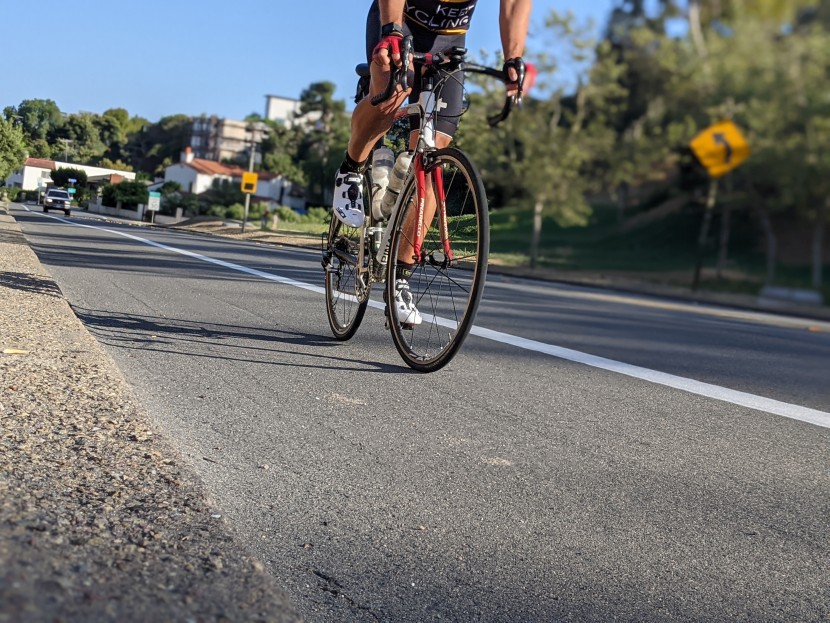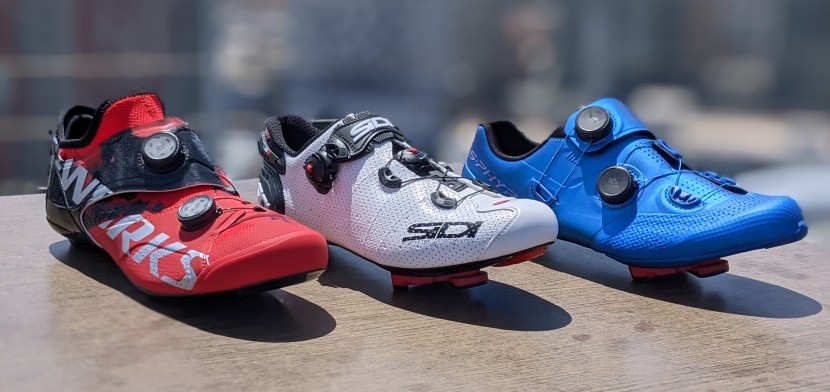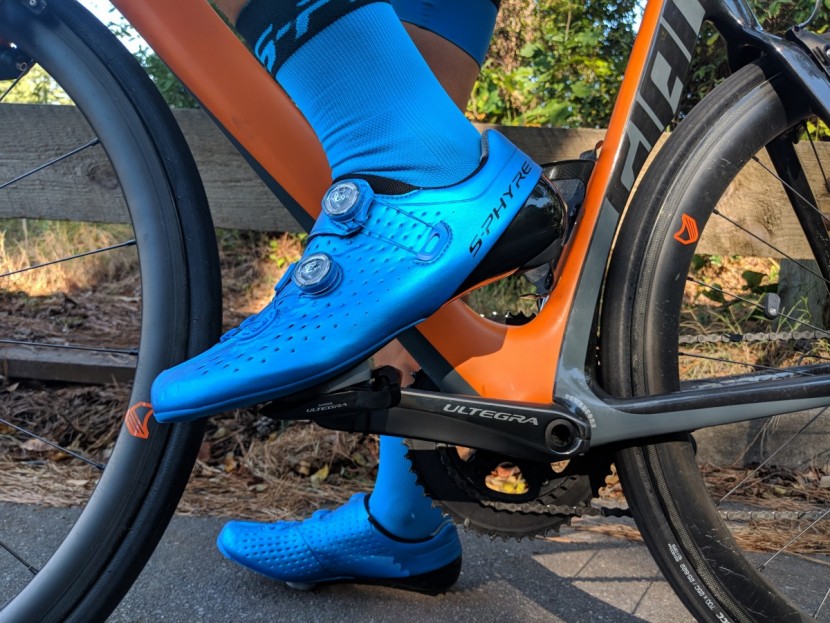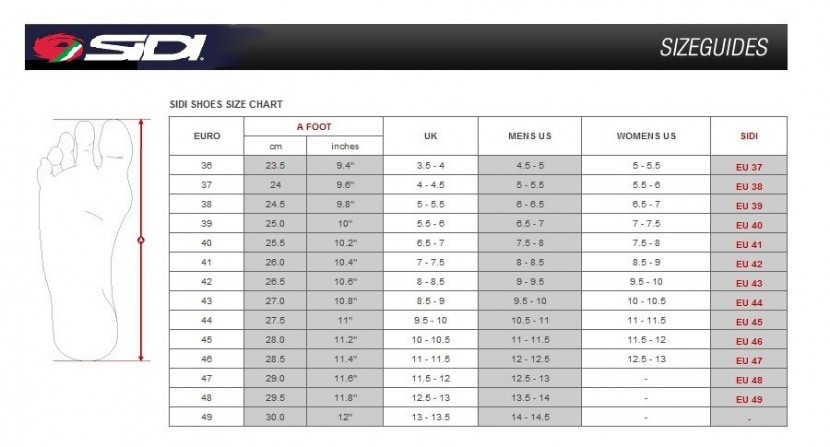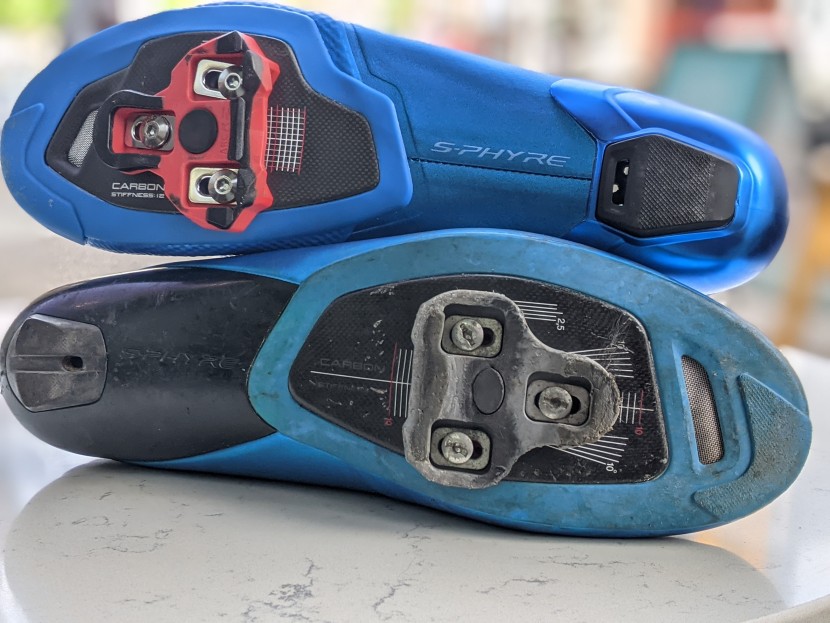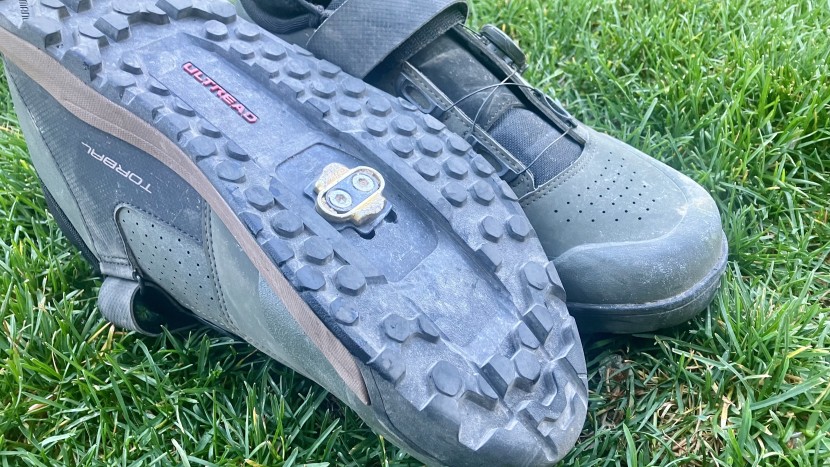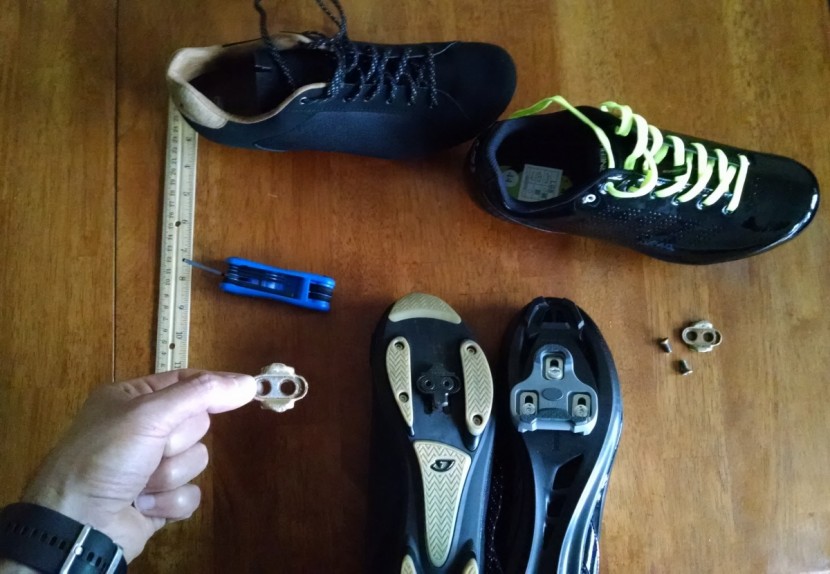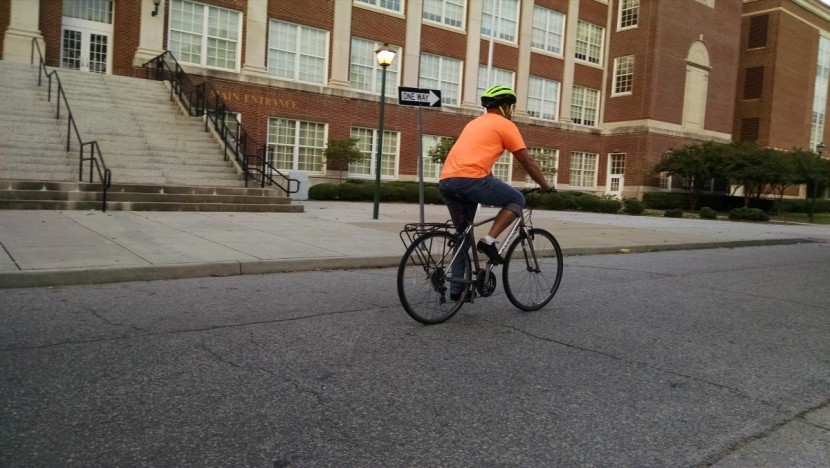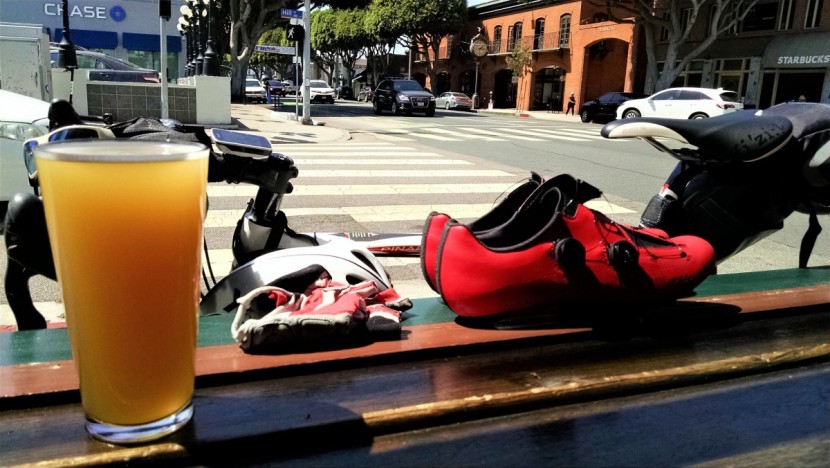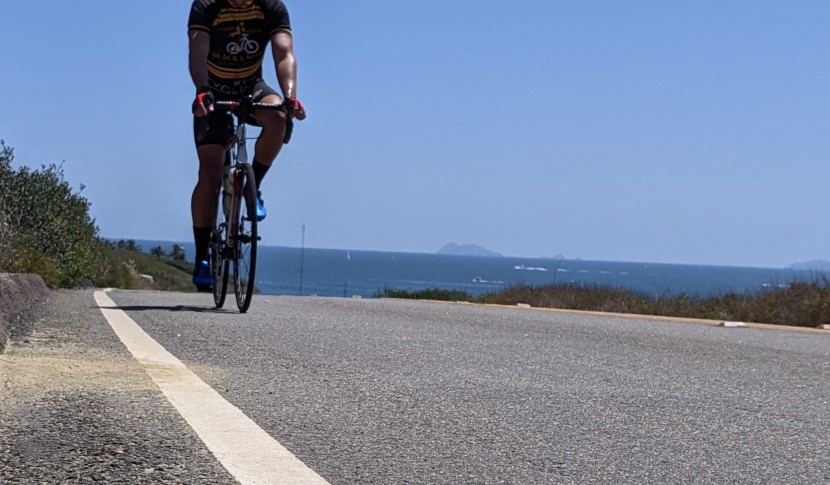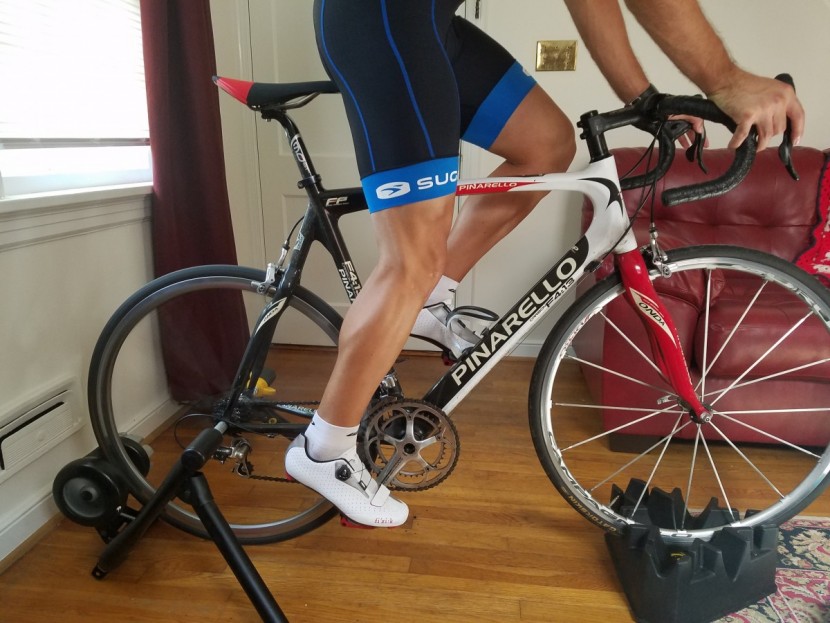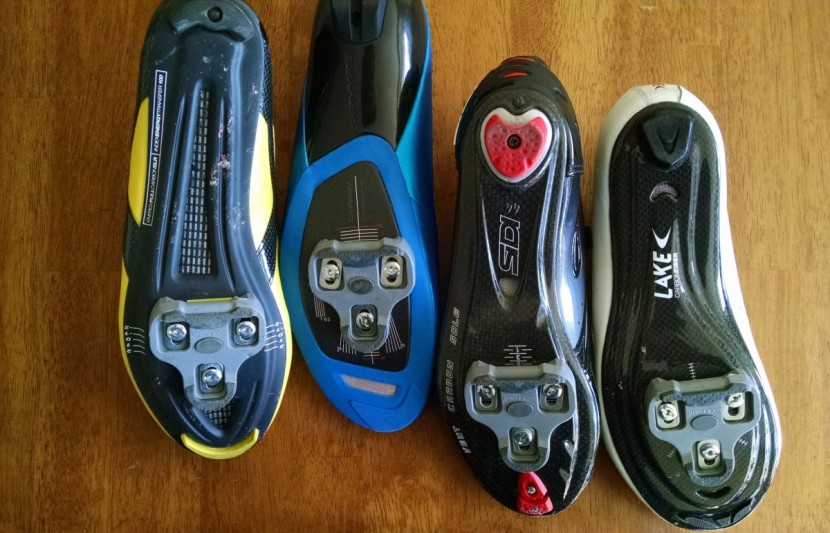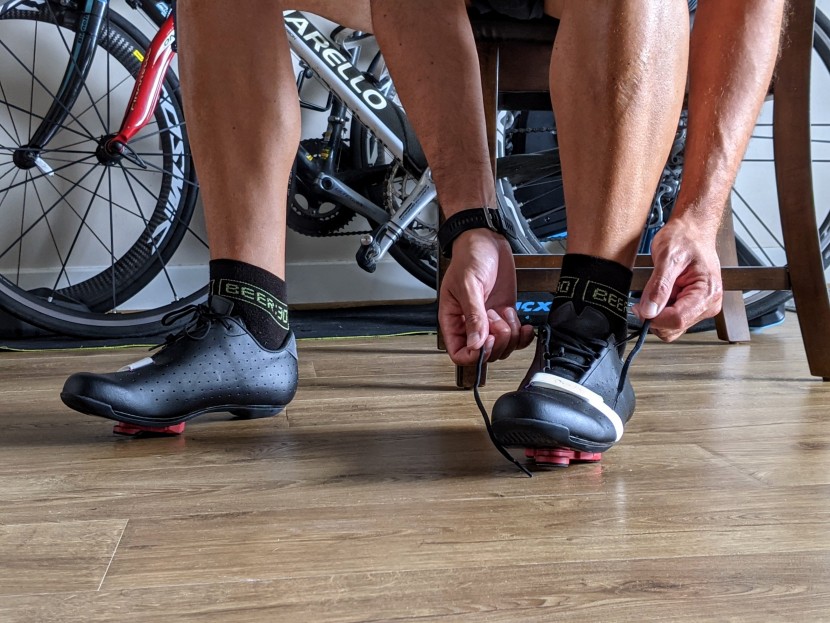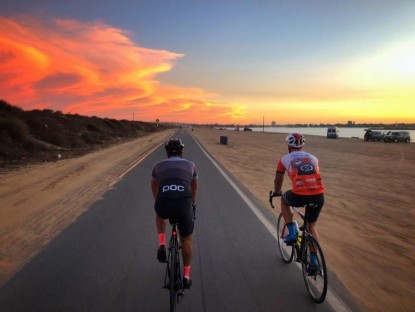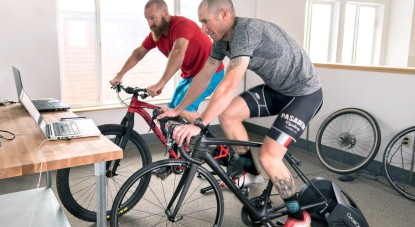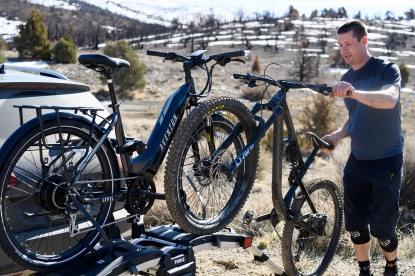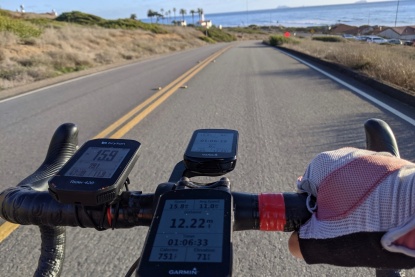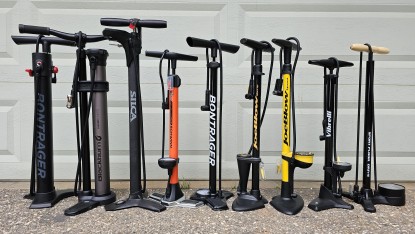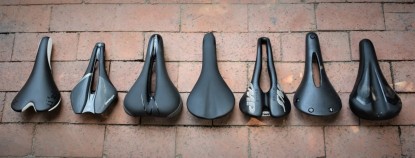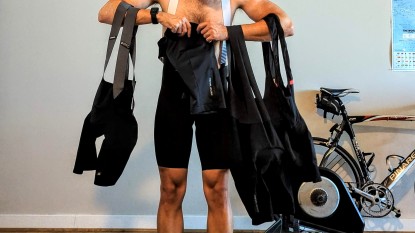You most likely found yourself reading this article after deciding you ought to look into a new pair of road bike shoes. Well, we don't make or sell cycling shoes, but we do go out onto the market and find the best offerings to test and review to kick our best advice back out to you. This here page is our best advice about road bike shoes in general. Here you'll find the collective thoughts of our experts and reviewers compiled and vetted over the years. You'll find years of roadie wisdom distilled and set in barrels for perfect aging, but sure to be updated with all the latest tech, trends, and fashion relevant to us and our two-wheeled world.
In this guide, we focus on cycling shoes with cleats and primarily discuss road bike shoes, though we touch on mountain bike shoes, triathlon shoes, bike shoes for commuting, and even Peloton bike shoes. We briefly touch on the different types of cycling shoes and when each would be used while we go into a good deal of detail about the different cleats and pedal configurations required for types of shoes. We close the discussion on different levels of shoe quality and performance and the financial impacts you can expect when you move along the spectrum.
Why Cycling Shoes and What About Them?
The reason why cycling shoes matter isn't just because they're sleek and stylish (to other cyclists). Sure, you can use a regular athletic shoe on platform pedals, but the significant advantage of using specialized cycling shoes with cleats is that it gives you way more control over the bike and improves your efficiency and stroke. You're grounding yourself to your pedals, so you can do a better job steering and balancing from a lower center of gravity. You also rarely have to worry about your feet flying off the pedals, so it's a lot easier to focus on slamming your soul into the bike to get up the hills or light the group up at the sprint marker.
There's debate over the efficiency gains from bike pedals, especially given that the upstroke usually is not an additive exercise, even with cleats. Instead, it seems to be a case of lifting some of the weight of your big thigh up off the pedal. But what can't be easily refuted is that the cleats can help you train for a more efficient, controlled, stable stroke. Now once you decide you're in and you want to make the leap into a new pair of cycling shoes with cleats, you need to start narrowing it down to figure out exactly what you'll need.
Bike shoes fall under four broad categories: road, tri, mountain, and commuter. We mainly focus on a few different shoes under the road umbrella, which we divide up into entry-level, mid, and premium (pro) road. With this spread comes various fastening systems, from simple wallet-friendly Velcro straps to wallet-accosting bi-directional Boa dials or some proprietary variation. To be fair, Boa dials and the like don't always mean you're jumping to a pricey shoe, but pricey shoes almost always have some such mechanism. And you can be sure that the newest, finest pieces of tech will find their way to the finest, fanciest road bike shoes at the top of the range. The BOA Li2, for example, was maybe a smaller innovation, but those in the top-end cycling world lauded its introduction and our reviewers fully agreed, even if it represented the minutest of marginal gains (yes, it's a super sweet finesse).
Upper materials also push and pull on price and quality, where mesh or synthetic leather is likely to be found on an entry-level shoe. In contrast, fine leather or advanced multifunctional material will adorn the premium shoes. The obvious exception is that lots of outfits have developed high-end synthetics that offer the same comfortable fit as premium leather but have superior moisture, bacteria, and odor management. They also have the added benefit of being vegan since the extraction and processing of hydrocarbons for an upper substitute meets that definition.
But the sole is where most of the fussing happens for road bike shoes. Soles range from plastic to nylon composite to carbon composite to full carbon with stiffness and power transfer adjusting accordingly. Manufacturing techniques for carbon fiber and composites have come a long way and improve every year, bringing innovations in performance and reductions in price. Still, it doesn't take the allure away from that dull iridescent shimmer we've all come to fawn over.
As with the rest of cycling, carbon fiber brings not just stiffness and lightness but also prestige, so expect all things carbon to come with a pricing premium. And of course, each of those materials carries with it their own grades and qualities, and again, associated prestige.
The best approach is always to buy gear appropriate to your station on the sport and earn your prestige through performance; no one likes a Fred with top-shelf gear. You can buy the premium stuff after you've proved yourself a smart, reliable group rider, can work like a fine cog in a beautiful machine in a paceline, know how to organize a good echelon with your buddies, and regularly drop the right guys at the right time so you can have a nice ride with the good riders for the last hour.
But before you get there, you need to consider how you'd like to lay down the power. What type of pedal will you use? The hole configuration will determine the bike shoe cleats that can be used, which define the shoes or adapters that can be used, which are selected based on the riding you intend to do. There are 2-hole, 3-hole, and 4-hole designs, meant to fit Crankbrothers and SPD (2), SPD-SL, Look, and Time (3), or Speedplay (4). Shoes will come with the 2-, 3-, or 4-hole design, or a combination, typically 2- and 3-hole to suit a particular cleat design.
Speedplay is usually the problem child here. Some road bike shoes will have Speedplay versions, usually for a few bucks more, and others require an adapter for Speedplay. Some models don't have any way to adapt to Speedplay (or to other versions). You need to check the shoe out pretty thoroughly to make sure it's compatible with your preferred pedals or be prepared to shell out for pedals that will fit your shoe's cleat configuration. It's also important to keep in mind that generally, pedals and cleats will not work with competitors' products, so make sure you're matching cleats to pedals. That can be super frustrating when you buy a new pair of competing bike shoe cleats; let's just say Shimano SPD-LS, to go along with a Shimano shoe after the previous cleat broke in half (very rare). Still, you ride Look Keo and don't realize that they absolutely don't fit together until after you've already traveled to your Airbnb in the middle of nowhere. You're all suited up with your riding buddies making fun of you while you're desperately trying to figure out why these new bloody bike shoe cleats won't clip in. Do your research.
A Note on Bike Shoe Sizes
You can look at this bike shoe size chart to get a better idea of where you need to be. This is Sidi's chart, but it should be pretty close across brands. Be sure to cross-check with whichever brand you end up choosing and check your return policy before buying, so you aren't stuck with something that isn't the right size.
The Type of Riding Determines the Shoe and Pedal
The first thing you need to narrow down is what type of riding you do. Where do you ride? If you're out on dirt or gravel trails and off-road, you need mountain bike pedals like Crankbrothers or SPD, which use cleats that are bolted into the shoe using two holes. These pedals are also two-sided so that you can enter from either side. It makes it a lot easier to jump in and get going on rough terrain. Almost all mountain bike shoes use this configuration.
If you ride to work or around town to the grocery store and cafes and do a good bit of walking, you might want to use mountain bike pedals as well, but your shoe may be a little more fashionable and better adapted to walking. You'll want a commuter shoe that uses extra walking pads and doesn't have a cleat that touches the ground when you're walking around. You'll appreciate them quite a bit more than road bike shoes, especially if you're walking across sleek marble floors. Most roadies in road shoes have at least come close to eating it on some shiny lobby floor somewhere. If you spend most of your time out on the road trying to crush it, you want a road pedal, which is typically a single-sided entry platform. There are cleat covers you can buy to protect your cleats and improve traction when you walk around off the bike. There's nothing wrong with that, but if you actually use them long-term, we all know exactly how clean your desk is.
You might notice that we sort of skipped over regular platform pedals. Just in case you're wondering why, it's because you can wear whatever the heck you want on those things, except, ironically, bike shoes. Chances are, your bike shoe won't have enough grip on the bottom to hang onto a platform pedal. The goal with those is to have as much soft rubber surface area contact on the pedal as possible, so your foot won't slip off. Most bike shoes have super smooth, super hard plastic, nylon, or carbon soles. Plus, you know, the whole idea is that bike shoes have cleats that secure you to the pedals to improve control and upstroke action.
Types of Bike Shoes
Mountain
Mountain bike shoes are meant for the hairy-legged folks with whom we do not associate, even though they seem to be a lot more fun and adventurous and probably spend a little more time living that brewery life. Mountain bike shoes tend to be much heavier, come with more reinforcement, will have tread for scrambling and walking, and will favor the 2-hole design.
Related: The Best Mountain Bike Shoes
Related: Best Mountain Bike Flat Pedal Shoes
Commuter
Bike shoes for commuting tend to be stylish and practical. Often they'll have lacing or simple Velcro straps. They're what you'll want to wear if you intend to walk around a little and just want to get around a bit. That means they'll be a little more padded and have large walking pads on the outsole. Usually, they use 2-hole cleats for pedals with easy double-sided entry. They also tend to have less rigid soles, partly out of expense, and partly because walking on a carbon fiber sole is not an overwhelmingly lovely experience. The great thing here is that commuter shoes aren't too expensive, but they'll treat you well, even if you have some epic climb on your morning commute. This also extends to courier or bike delivery riders who need to run into shops and up steps to clients when they're not bombing down hills and blasting through traffic. You want something that kicks ass on the bike (stiff) but not so stiff it betrays you when you dash up a flight of stairs (you want flex in the sole here). And, of course, courier and delivery riders want cleats. That usually boils your options down to something like SPD commuter shoes.
These are good bike shoes for spinning as well. This can also be reasonably extended to Peloton stationary bikes. These bikes usually come with LOOK pedals, so if you don't already have road bike shoes, you'll want to buy some affordable bike shoes with cleats. Of course, if you're concerned about the indoor training sweat factor soaking your good road shoes, you might want just to have some dedicated Peloton bike shoes.
Touring
If you want to tour, you'll probably want bike shoes for walking. Touring shoes - we mean leisurely touring - are very similar to commuter shoes, but because they put in more miles, you'll want a little more stiffness in the sole, less weight, and probably something with more ease of adjustability than laces. It can be fairly difficult to strike a balance between walkability and performance for touring shoes, so go with your judgment. If you expect to putter around and walk all over the place, go with a more walkable shoe. If you think you'll spend most of your time getting in miles and stopping only occasionally, go with something a little stiffer and less walkable with better adjustability. Of course, it's not set in stone that you need a lower-cost, flexible shoe for touring. It just depends on the style of tour you'll be doing. High-performance carbon fiber shoes are the mainstay in stage races, but be careful if you haven't built yourself up in stiff carbon shoes and want to ride 500 miles over a few consecutive days.
Road
This is where the more serious shoes fall. Proper road bike shoes are so much meant for the bike that they're barely functional off the bike. As a rule, cycling shoes are stiff, streamlined, not necessarily comfortable, and light. They use all sorts of advanced and exotic materials and designs to give you an edge or solve a problem. Heel slips? Put a fastener on the outside. Tongue rubs? Redesign it out with a burrito tongue. Toe degrades? Add a replaceable toe pad. When you approach road bike shoes, you should be thinking regarding the type of rider you are, where and how you'll be riding, what level of investment you're willing to make in return for performance, and any problems you face if you're replacing old shoes.
Triathlon
Bike shoes for triathlon are a bit of a different beast. They're similar to road bike shoes but are a bit more stripped down in some areas and modified in others. They're meant to be as comfortable as possible when worn barefoot, probably with wet, salty feet, so their liner is usually a little nicer than standard road shoes. Plus, they have additional drainage areas because you're usually coming out of the water and jumping on the bike. They also usually come in a bit lighter to reduce weight as you time trial your way around a course. And their soles usually have a little more protection to keep you from ruining the shiny finish as you sprint across the transition zone to the run.
Need some new pedals?
If it's time to upgrade your pedals, check out our favorite road bike pedals from our comprehensive tests.
How to Choose Cycling Shoes
Now that you've landed on road shoes specifically, it's important to ask yourself a few key questions before you purchase a pair. These considerations will help you better sort through the myriad options on the market, and specifically the ones we've highlighted in our reviews.
How Do You Ride?
If you're a climber, especially if you prefer to get out of the saddle, you're going to want super light, super stiff shoes that will hold you up and transfer everything you put in down to the pedals. You'll probably want something that will adjust pretty easily as some riders tend to tighten shoes for a long climb and loosen once they're back to flats or low rollers. This almost always means carbon fiber with some thin synthetic upper.
Sprinters might not care as much about the weight but will want a stiff shoe that they can dial down ahead of an effort. Usually, this means carbon fiber and a reinforced upper that can take some serious wattage. This is also the ideal style for crit racers who crush at near-sprint for about an hour and need to be able to accelerate super quickly.
Cruisers/domestiques who just put the hammer down and hold it for a few hours will want a more general shoe that favors comfort. That probably means that it won't be the lightest shoe on the market or the stiffest; however, they will have a nice molded footbed that helps the shoe conform for the foot, has a smooth inner lining and a good deal of padding, and will have a snug, uniform tightness to cut down on hot spots.
What Conditions Do You Ride In?
One thing that only becomes apparent when it's raining is that your shoes would be great if they had big holes in the bottom, so your feet weren't swimming and carrying an extra liter of water. That's what happens in the middle of July when your ride's already in the mid-90s at 10 am, and you still have another hour of riding left. Your socks are soaked, and your shorts, helmet, and glasses are caked in salt, and you wish you hadn't bought the fully enclosed, heavily padded (read: hot) shoes in October when you were thinking about winter.
It's best to anticipate those conditions and buy shoes that will work for what you'll encounter. That might mean finding a generalist shoe that can vent out heat and dump water or be sealed off enough to keep the feet warm in chilly conditions. It might also mean buying your main season shoe that fits the weather and climate where you do most of your riding and buying a pair of less expensive inclement weather shoes that you only break out for icy or rainy weather.
So to break that down, wet conditions probably mean you want some drainage in the soles and a thin, stripped-down upper that isn't going to soak up a ton of water and squish around too much. Hot conditions mean the same thing, but you'll probably want more ventilation in the upper, whereas for wet circumstances, it's probably best to have an impermeable upper. For cold, wet conditions, you'll want perfunctory drainage holes in the sole, but anything more will act as a vent, and you'll have an unwelcome breeze on your damp feet. For just cold conditions, get the most padded, thick-walled, ventless shoes possible, but make sure they're roomy enough for thick socks. Your toes will thank you.
Entry, Mid-Level, or Pro?
This question comes down to your budget and your expectations for performance. A new rider, irrespective of pocket depth, should be looking to get into a pair of modest entry-level shoes. First off, it will save you from the ridicule of the group ride as they watch the Fred in the premium gear embarrass himself out on the road for a few months and wonder out loud if he thought he could buy the skills. Second, it will save you from the rage that comes with learning how not to scuff, scrape, and scratch a shiny new pair of beautiful carbon shoes like a noob. Consider them to be your beater car until you get through the learning curve. Plus, hey, they're affordable and usually lend themselves to mountain biking, commuting, and spin classes. You can expect these to last a few seasons.
Mid-level shoes are for riders who are a little more seasoned and serious. They typically have tougher, lighter material in the upper, some sort of advanced composite in the outsole, and likely have at least one advanced fastener, like a Boa dial. These will cost a bit more than the entry shoes, but will look nicer, have greater adjustability, and be lighter and stiffer than the entry stuff, but will last longer and perform better.
The pro-level shoes are where you need to really decide that you're dedicated to riding. These are an investment that you can keep using for years. They're usually beautiful shoes that you can also beat the crap out of because they're made from top-of-the-line materials and almost always have a full carbon sole.


